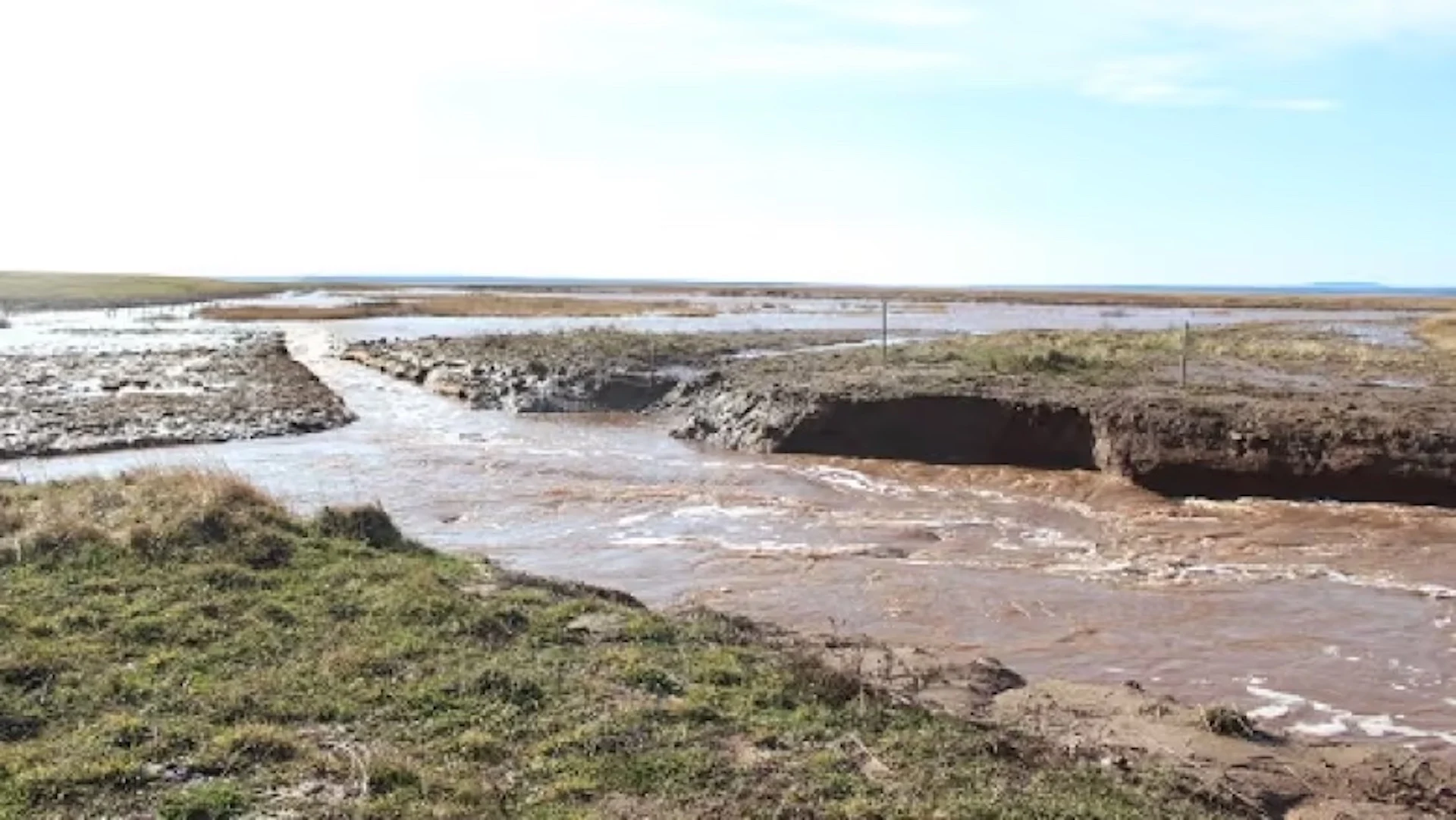
More coastal wetlands to be restored in N.S. to reduce climate change damage
Several coastal areas on the Bay of Fundy where dikes were built to stave off the ocean tides are set to be restored to tidal estuaries.
The aim of the project is to protect the land from potentially disastrous flooding and erosion.
Danika Van Proosdij, a professor at Saint Mary's University in Halifax, is at the forefront of wetlands restoration research in Nova Scotia and has already overseen the restoration of over 400 hectares.
SEE ALSO: Inside Canada’s fight to save its peatlands
Van Proosdij, who is also the director of the Saint Mary's TransCoastal Adaptations Centre for Nature-Based Solutions, said she's targeted an additional 75 hectares of wetlands to be restored. Nearly $4 million in funding from the provincial and federal governments will help make that reality.
"We're going beyond research," Van Proosdij said in an interview Tuesday, following an event organized by the province to announce its $1.9 million contribution to the project.
The areas to be restored are along three tidal rivers: the St. Croix River, River Hebert and the Maccan River.

Danika Van Proosdij at a salt marsh near Windsor, N.S. The salt marsh formed after the construction of a causeway in 1970 and while it was not an intentional salt marsh restoration, she says it demonstrates the capacity of salt marshes to establish themselves in coastal environments. (Moira Donovan/CBC)
Many coastal communities and farms on the Bay of Fundy have dikes to hold back the bay's monstrous tides. But many of those dikes were built hundreds of years ago and need repair; they're vulnerable to being breached by storm surges.
Van Proosdij's work targets fallow agricultural land. Dikes are removed or set back and the natural vegetation of a tidal estuary is allowed to grow back.
"This new wetland then provides a whole bunch of ecosystem services," she explained. "They help reduce flooding, they help reduce erosion, they provide a lot of habitat for fish and other organisms [and they] sequester carbon and reduce greenhouse gas emissions."
Van Proosdij said she's seen wetlands fully restored within two years of moving a dike.
She has proposed wetlands restoration on a large scale as a tool for protecting the Chignecto Isthmus, the narrow strip of land that connects Nova Scotia to New Brunswick.
WATCH: Known for its wild horses, this Canadian island is fighting off rising sea-levels
Rising sea levels put the Isthmus at increasing risk of flooding during storm surge, which is a longstanding concern for people in area, particularly the town of Amherst, N.S. That concern is underscored every time a major storm bears down on the area.
The Nova Scotia government also announced funding for several other climate change adaptation projects on Tuesday, including $2.4 million for groups in the agriculture sector to hire climate adaptation coordinators.
Thumbnail courtesy of Moira Donovan/CBC.
The story was originally written by Taryn Grant and published for CBC News.










